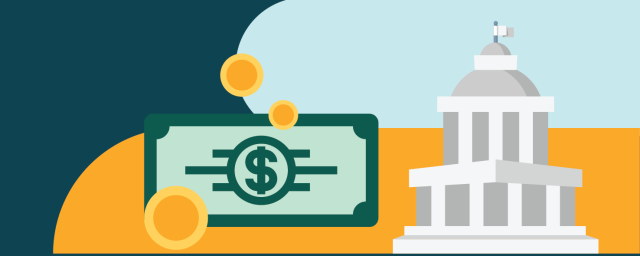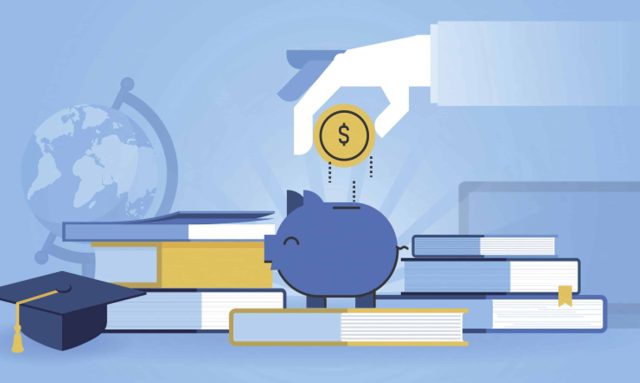3 Different Types Of Student Loans: Which is Best for you?
By Dumb Little Man
January 10, 2024

Student Loan helps current students and recent graduates to make sense of borrowing choices, student debt, and loan repayment to carry out their higher studies and start their own business. Through student loans, students can easily do something to become financially independent to support their families and play a good role in the community which is beneficial for the country.
Types of Student Loan
- Federal Students Loans
- Private Students Loans
- Refinance Students Loans
1. Federal Student Loans
The federal government provides federal loans to students, while banks, credit unions, and other states make private loans and refinance loans.
Federal student loans have never meant to be handouts, but increasingly that’s what they have become more flexible overall. This loan is particularly best for students when they depend on factors like a year of school, fulfilling their financial needs, and whether they have a credit history. Centralizing federal student loans and placing annual and lifetime access on lending amounts would create more space for private lenders, hedge against tuition inflation, and lessen student-level debt.

In 2021, 17.5 million students were enrolled in different U.S. colleges and universities a huge number but, in fact, a slight dip from 2019 that experts connect to COVID-19 challenges. About half of them received federal student loans through the William D. Ford Federal Direct Loan Program.
The average student loan debt among 2021 college graduates who borrowed 64% of all students was $40,000.
Types of federal student loans
There are three types of federal student loans. They’re all provided by the federal government through the Federal Direct Loan Program.
- Direct Subsidized Loans are according to financial need.
- Direct Unsubsidized Loans are not according to financial need. They’re not credit-based, so you don’t need a cosigner. Students' schools will determine how much they can borrow, based on the cost of attendance and how much other financial aid they are receiving.
- Direct PLUS Loans are credit-based, unsubsidized federal loans for parents and graduate/professional students to do some startup. Direct PLUS Loans for parents are also called Parent PLUS Loans.
2. Private Students Loans
Private student loans are available, but every expert, even those who work for banks and credit unions, advises students to exhaust all applications for federal aid first. Private student loans have some specific conditions and criteria, such as very good credit or a cosigner needed that make them difficult to obtain. The interest rates usually are higher than those on federal loans and there are some conditions involved that aren’t part of federal loans.
Private Students loans come in many different shapes and sizes, and the regulations for them can be different as well.
Types of Private Students Loans
Banks and other financial institutions make private loans for students to do something. When students apply for private loans, the lender will want to see proof that they can repay it, usually in the form of a great credit score. A co-signer can help students qualify; that person will be responsible for the loan if you can’t pay it back.
- Private Students Loans are issued by a bank or other financial institution.
- Private student loans are given to the student; they’re often cosigned by a parent or another creditworthy individual who takes their responsibility.
- Parent loans are another way to get money for college or universities. A parent or other creditworthy individual takes out the loan to help their student repay for college.
Comparing Federal Students Loans vs. Private Students Loans:
A huge majority of student loans are made through the William D. Ford Federal Direct Loan Program, but when some students need more help to complete their college education, they turn to private lenders, such as banks or credit unions.
The major difference between federal student loans and private student loans is the cost and the use of credit scores in determining eligibility criteria.
Undergraduate students applying for federal loans will not need to go through a credit check. Graduate students who are seeing federal loans must go through a credit check and could be denied loans if there is adverse information in their credit history.
Credit checks are the norm for public loans. A credit score of 650 or above is required and, depending on the criteria and conditions, students may need a score much higher than that to be approved.
Some other differences between public (federal) and private student loans are following:
- Interest rates on federal student loans are fixed. The interest rates on private student loans can be changed or fixed and usually are higher.
- Undergraduate borrowers who can demonstrate financial need could receive a federal subsidized loan, meaning the government pays the interest until they graduate and when they get a job or start a business it pays back. Private loans are never subsidized. students pay all the interest.
- Federal loans offer flexible repayment choices and loan forgiveness programs. Some substantial portions of federal loans may be forgiven if the government has to give relaxation. Private student loans have few repayment options, no loan forgiveness programs, and are unlikely to be included for amnesty in any federal legislation.
- Federal loans don’t have to be repaid until you graduate or pass out below half-time status as a student. Many private loans ask for repayment while students are still in school.
3. Refinance Student Loan
When students graduate and have shown responsible payment history, they may be able to refinance student loans. That’s when a private lender pays off student loans and gives you a new repayment schedule and a lower interest rate. Generally, students need a credit score of 695 or higher to refinance. Students will lose federal loan protections if you include federal loans in the package.

Types Of Refinance Student Loan
There are three types of Refinance student loans
- Parent PLUS refinance loans
- Medical school refinance loans: During residency
- Medical School refinance loans: After residency
How to apply for a federal student loan or private student loan?
The application process for a federal student loan
Students apply for a federal student loan by filling out and submitting the Free Application for Federal Student Aid (FAFSA). Students must read all the rules and submit the FAFSA to be eligible for a federal student loan.
To submit the FAFSA for federal student loans (and for all types of federal financial aid), there are a few things to keep in mind:
Remember that there’s no fee for submitting it. (If you’re asked to pay, you’re not at the right official website.)
Complete the FAFSA every year you need money for college.
Get it in as soon after within 6 months as possible. The earlier, the better, since some huge money is awarded on a first-come, first-served basis.
Students find out how much they’re eligible for in federal student loans when they receive your financial aid offer.
How to apply for a private student loan?
Since private student loans are offered by banks and financial institutions (as opposed to the federal government), you apply directly to the lender.
Follow these instructions to apply for a private student loan:
- Go to the lender’s official website.
- Check the interest rate of the loan, along with the flexibility of repayment choices and other benefits.
- Apply directly on the website. You’ll be asked to choose the type of repayment option and interest rate type you want.
- You may want to consider adding a cosigner which may improve your chances of getting the loan.
- The lender will check your credit (and your cosigner’s, if you have one), and will communicate the decision to you.
It doesn’t take long to fill out a private loan application online. If you apply for a loan with us, it only takes about 15 minutes to apply and get a credit decision.
You accept your federal student loans by signing and returning your financial aid offer. You may be asked to take part in entrance counseling at your school to make sure that you understand your loan obligations. Plus, you’ll sign a Master Promissory Note (MPN) to agree to the loan’s terms.
You accept your private student loans after you’ve been approved. Here’s our process:
- You’ll choose the type of interest rate and repayment option for your loan.
- You or your cosigner will accept the terms of your loan and sign it electronically.
- Your school will be asked to certify your eligibility, including verifying your enrollment and the loan amount you’ve requested.
Both federal and private student loans are legal agreements. When you agree to a loan and sign or e-sign for it, you’re committed to paying it back, along with interest.
Repaying federal and private student loans:
- Federal student loans: Following a six-month grace period, you usually begin to make principal and interest payments.
- Private student loans: You’ll generally have a six-month grace period. If you elected to make in-school fixed or interest payments with our Smart Option Student Loan, you’ll continue to make those payments during your grace period. After that, you’ll begin to make principal and interest payments.
Why do students take out loans?
There are five reasons why students take s students loan
1. Great rates
Federal student loans have a low-interest rate and students pay back it when they have earned a certain amount. Likewise, with a private Student loan from someone like Future Finance, you benefit from lower, capped repayments in the study.
2. Chunky tuition fees
Course fees have increased dramatically in recent years, which is difficult for students to pay
3. Living expenses
The costs of living for three years (or more) can soon mount up, especially if you’re studying in one of the big UK cities. A maintenance loan from the government or a Future Finance student loan can help give you a decent standard of living.
4. Peace of mind
Instead of worrying about next month’s rent or fee, a good student loan can help give you sensible long-term finance so you can stay relaxed, energized, and completely focused on your studies.
5. Invest in the best
Higher education is increasingly seen as an investment in your future. Why should students deprive themselves of the life and career they really want because they don’t have the money to pay for it right now? A smart, flexible student loan can help you realize your potential and achieve your goals.
FAQs
What type of loan is best for student loans?
A subsidized loan is your best option. With these loans, the federal government pays the interest charges for you while you're in college.
Can you refinance federal student loans?
You can refinance student loans, but only with a private lender. You can't refinance student loans through the federal government. You can consolidate federal student loans, but federal consolidation won't lower your interest rate or save you money.
Dumb Little Man
At Dumb Little Man, we strive to provide quality content with accuracy for our readers. We bring you the most up-to-date news and our articles are fact-checked before publishing.


